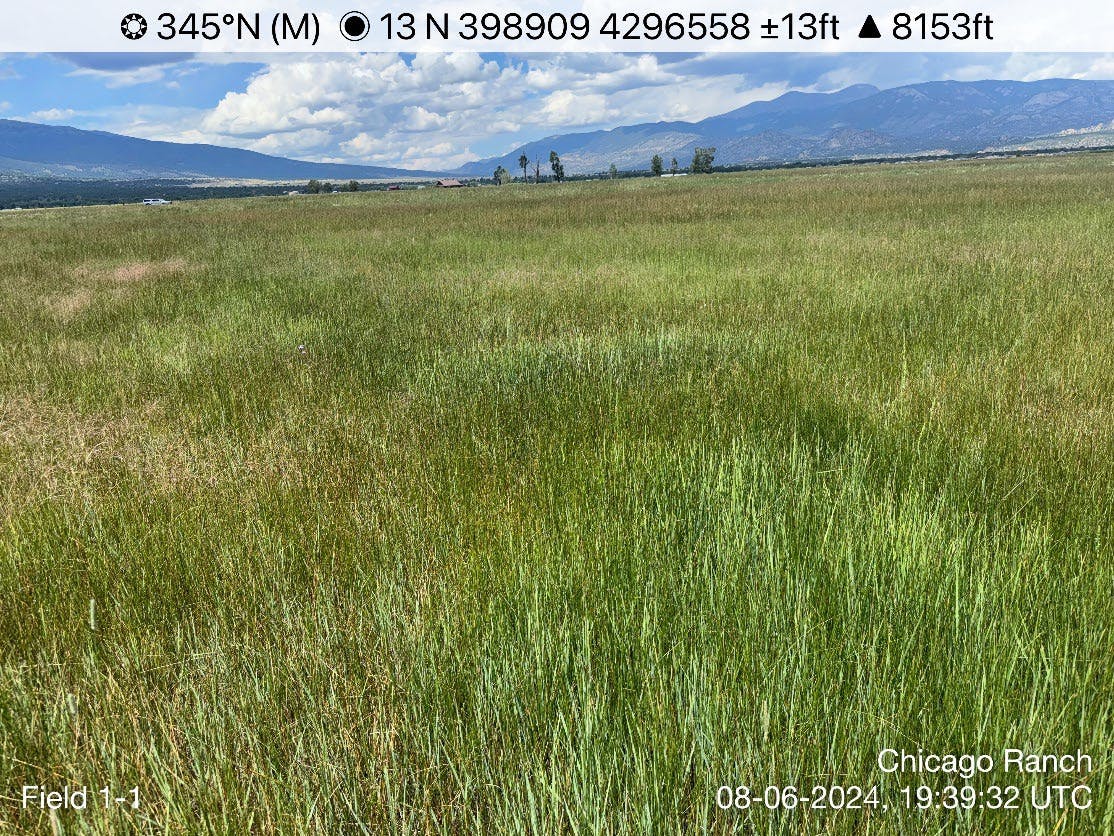Chicago Ranch Revegetation Plan

Restoring Chicago Ranch: Native Plants, Healthy Land, Strong Future. Chicago Ranch Revegetation and Adaptive Management Implementation, 2025
Turning Requirements into Resilience: Our Commitment to the Land. Triview Metropolitan District in coordination with The Town of Buena Vista, is undertaking a revegetation initiative on the 294-acre Chicago Ranch property, formerly irrigated agricultural land, to meet state-mandated land-use changes associated with water right conversion. This effort is part of a larger annexation and land stewardship agreement that ensures the long-term environmental health, recreational value, and resilience of the land for the community.
Restoration with a Purpose: Native Cover, Resilient Landscape, Community Access
To implement a science-based, adaptive revegetation plan that:
- Controls noxious and non-native weeds.
- Establishes a self-sustaining, native plant canopy.
- Meets regulatory benchmarks tied to water court decree case 21CW304.
- Prepares the land for long-term public use as open space and recreation.
From Water Rights to Restoration: The Work at Hand.
Background on Water Change Case and Revegetation Plan for Chicago Ranch
Chicago Ranch is a 293.96-acre historically irrigated agricultural property south of Buena Vista’s Rodeo Grounds. Triview Metropolitan District purchased the land and water rights in December 2020, intending to convert the water for municipal use and dedicate the land for open space and ecological restoration.
Water Rights Change Case
Triview filed Water Court case 21CW3044 in 2021 to change water use from irrigation to municipal purposes. A final decree was issued in March 2024. A key requirement of the decree was a revegetation plan to prevent erosion and habitat loss.
Revegetation Plan Development
The Revegetation Plan was collaboratively developed by Triview, the Town of Buena Vista, Chaffee County, Cedar Creek Associates, and Wright Water Engineers. It was formally attached to both the Annexation Agreement and the Water Court decree.
Plan Objectives and Implementation
The Plan aims to:
Control invasive weeds like Canada thistle and knapweed,
Establish native vegetation with at least 60% canopy cover,
Use adaptive management informed by seasonal monitoring.
The 2025 Integrated Pest Management Plan (IPMP) presents all potential treatments such as spot applications of Milestone herbicide for noxious weed control. Triview is fully responsible for implementation, monitoring, and costs. An annual work plan will be developed each April until revegetation is completed.
Annexation and Land Management
As part of the 2024 Annexation Agreement:
Triview will convey the land to Buena Vista within 45 days (This has been completed).
A 20-year conservation covenant protects the land as open space and recreation.
Triview retains easement rights to operate water recharge infrastructure.
The 2025 Implementation Includes:
- Vegetation monitoring across seven historically irrigated fields.
- Qualitative (April, June, September) and quantitative (August/September) vegetation assessments.
- Adaptive management based on monitoring results.
- Coordination with stakeholders and compliance with the Revegetation Plan Agreement.
- Spot application of targeted herbicide treatments to Canada thistle.
Please click on News Feed (at the bottom of the page) for more detailed information.
Tracking Our Impact: Milestones & Results:
- Completion of the 2025 vegetation monitoring and treatment schedule.
- Submission of annual IPMP Implementation Report.
- Improved ecological conditions that reflect successful dry-up and revegetation benchmarks.
- Public updates and transparency on ecological progress and adaptive actions
- Annual IPMP Monitoring Reports (vegetation conditions, weed management outcomes).
- Established native plant cover across all former irrigated fields.
Public, Partners, and Stewards: Who Makes It Possible
- Triview Metropolitan District – Land donor, lead agency for implementation, public access, and long-term maintenance.
- Town of Buena Vista – Owner, public access, and long-term maintenance.
- Cedar Creek Associates & Bristlecone Ecology – Monitoring and ecological assessment.
- NES Inc. – Planning and design lead for the Master Plan.
- Chaffee County & Colorado Water Court – Regulatory oversight and legal compliance.
- Residents and Visitors – Users and stewards of the public open space.
Restoration Timeline: What to Expect and When (Repeated Annually)
- April 2025: Pre-season meandering survey completed.
- May–June 2025: Herbicide applications (Canada thistle, green stage).
- June 2025: Mid-season meandering survey.
- August–September 2025: Quantitative baseline vegetation study.
- September–November 2025: Second herbicide application window.
- Fall 2025: Final meandering survey, adaptive management updates, and reporting.
- December 2025: Project Report Due
- April 2026: Proposed Annual Management Plan Due








